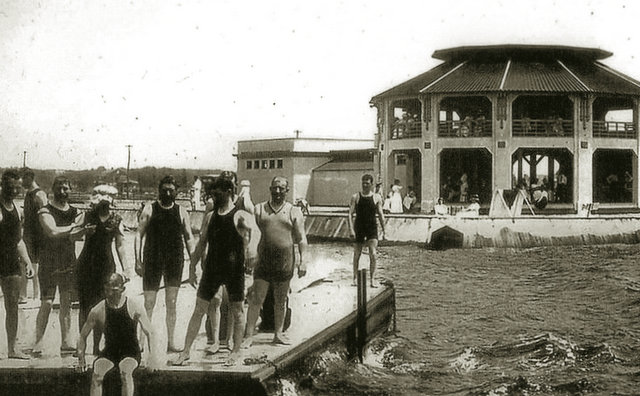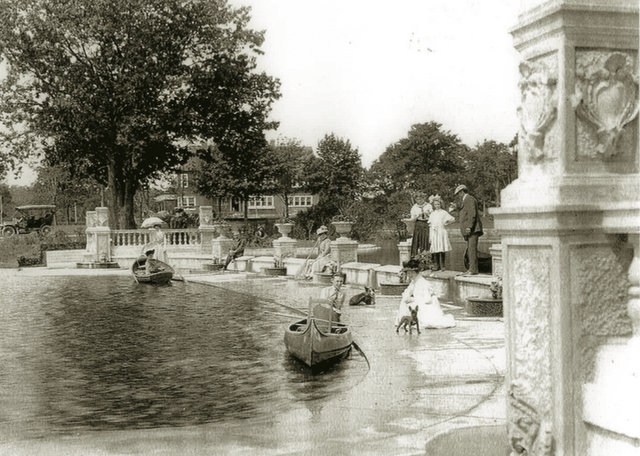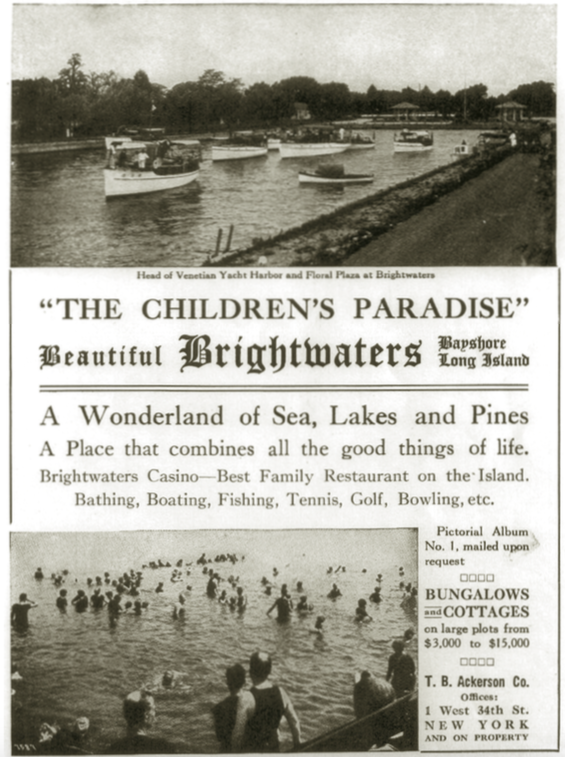4. Brightwaters, City by the Sea
 Bathing pavilion at the entrance to the Venetian Canal, ca. 1910. Bay Shore Historical Society
Bathing pavilion at the entrance to the Venetian Canal, ca. 1910. Bay Shore Historical Society
T.B. Ackerson’s grand vision for the South Shore of Long Island, started as a $500,000 purchase of 525 acres of land from the Charles E. Phelps estate in 1907. Ackerson quickly supplemented his purchase with other large tracts of land, totaling 1,300 acres for his eventual “Thousand-Acre City by the Sea.” The project stretched the wide expanse of the Great South Bay north to the LIRR tracks, where 400 acres were set aside for experimental farms that showcased an area’s fertility – an effort to attract more residents.
Ackerson’s vision varied from that of Long Beach – Brightwaters was to be a “an all-year home colony instead of a summer stopping place.” Like many before him, Ackerson knew the role easy accessibility would have to this project’s success – the newly completed East River tunnels, and ease of commuting to New York City from the development became the focal point of the Ackerson Company’s promotional materials.
The key concept of the project was emulating Venice. Ackerson, not one to be tamed by natural geographic layout, uprooted the existing pitch pine forests in the area (a small slice can still be found to this day within the Edgewood Preserve in Brentwood) carved lakes, and converted the salt marshes into a 175 foot wide, 20 foot deep grand canal that took two years to build from 1908 to 1910, and at the time cost upwards of $250,000.

Along with the grand canal, Ackerson created parks, forty miles of wide, planted streets, water and gas mains and electric street lighting. For homes, lot sizes were typically 100 x 150 feet, and Ackerson offered four simple models for his customers to choose from. If none sufficed, he was happy to just sell off the land and allow future residents to bring their own builders. By 1917, Ackerson built 200 homes, making Brightwaters one of the “most successful planned suburban developments of the period.”
 Ackerson Company advertisement featuring water recreation. From a Long Island Railroad booklet, ca. 1917
Ackerson Company advertisement featuring water recreation. From a Long Island Railroad booklet, ca. 1917
Soon, a 620 acre section of the development stretching from the Bay to the LIRR tracks incorporated as a village, and Ackerson’s dominance over the project began to wane. Paired with downturn in development following the outbreak of World War I, Ackerson eventually auctioned off his land for a loss, leading him to the path of bankruptcy in 1920. Despite bankruptcy, Ackerson paid his debts and attempted a new project in Roslyn, before suddenly dying.
His legacy lives on. In 2007, Brightwaters celebrated its centennial with two-thirds of the village’s Ackerson-era structures still standing, and landscape remaining period correct. Ackerson’s vision still benefits residents today, and will continue to do so in the coming decades.





